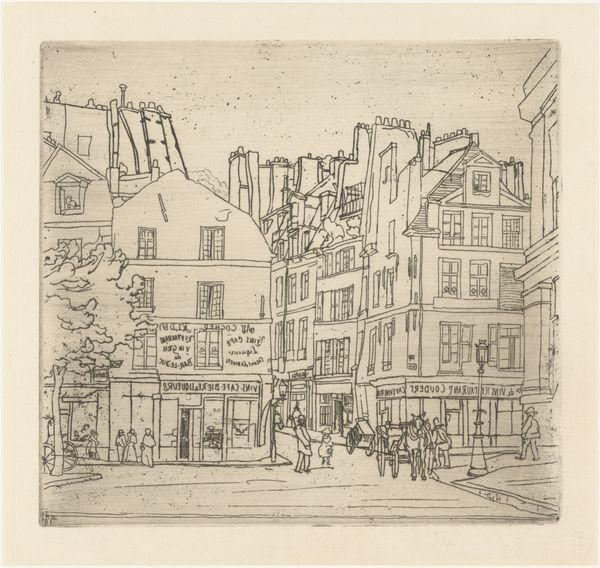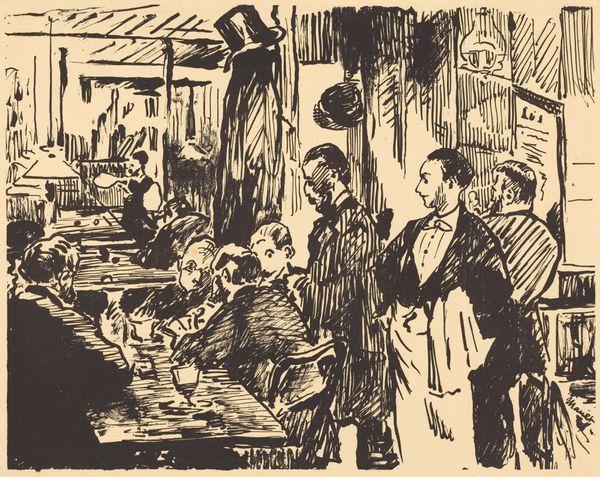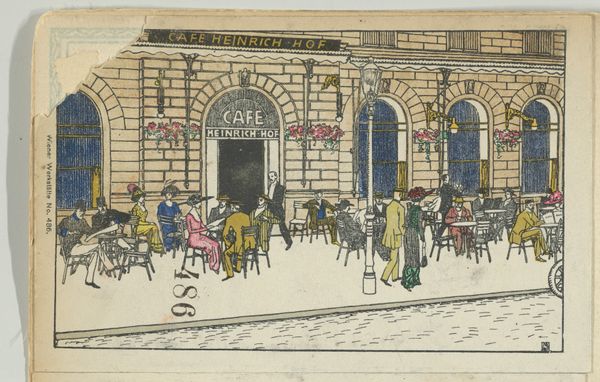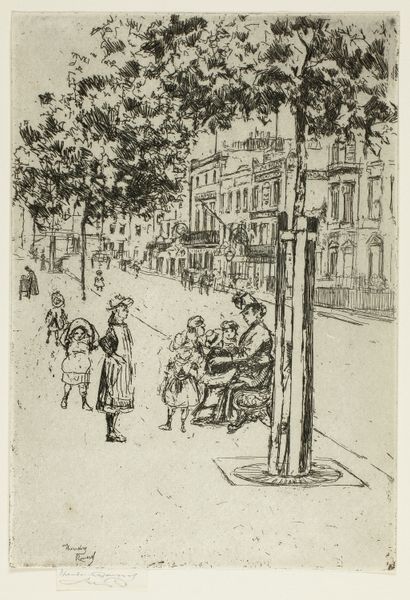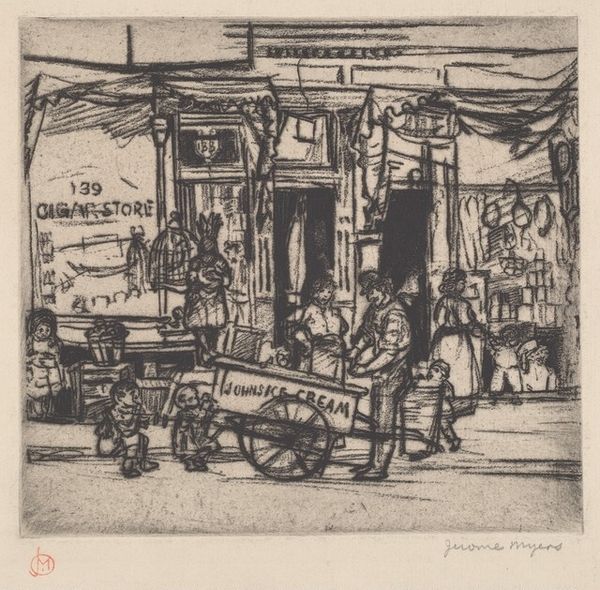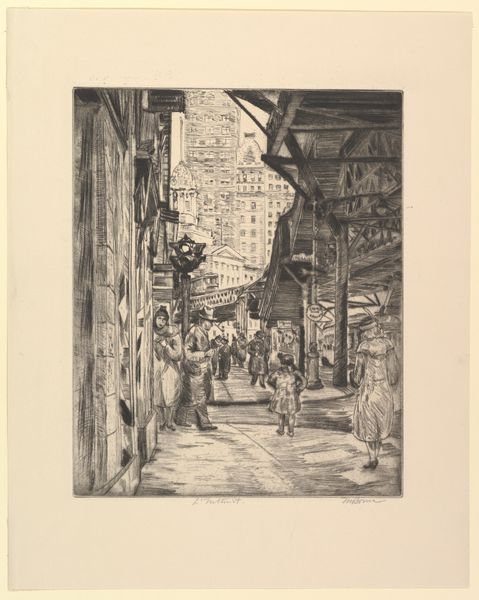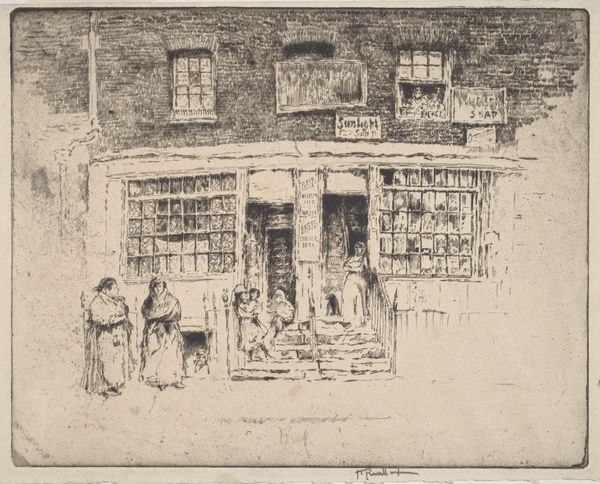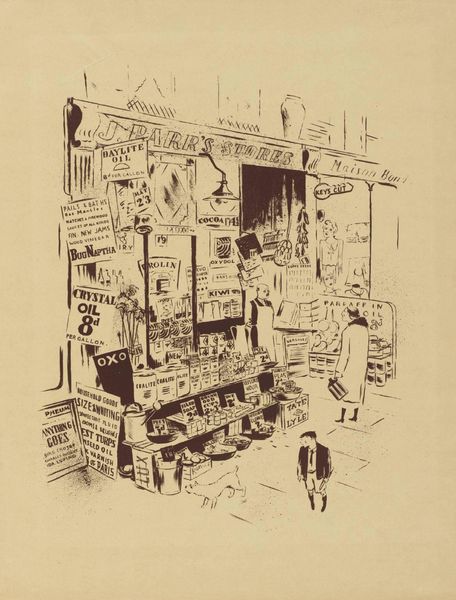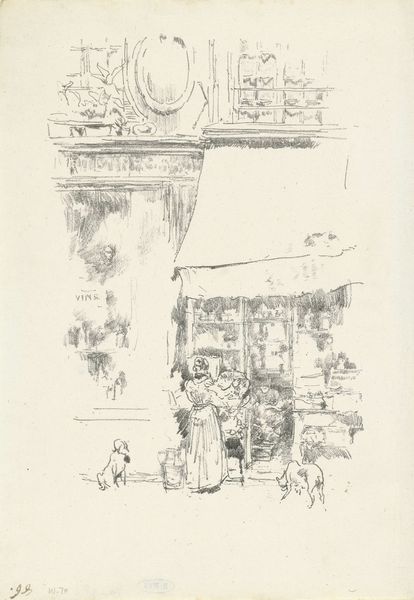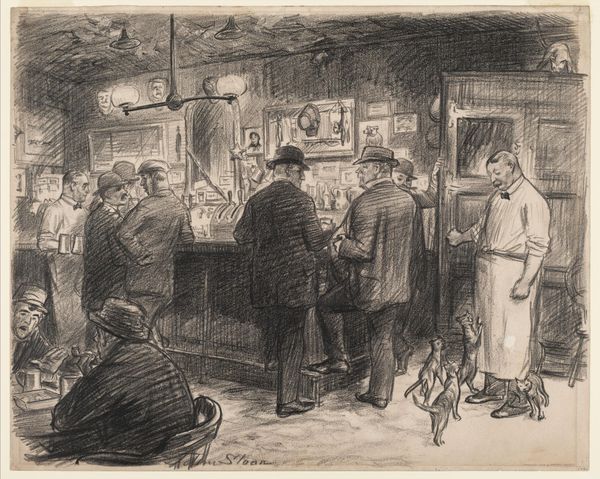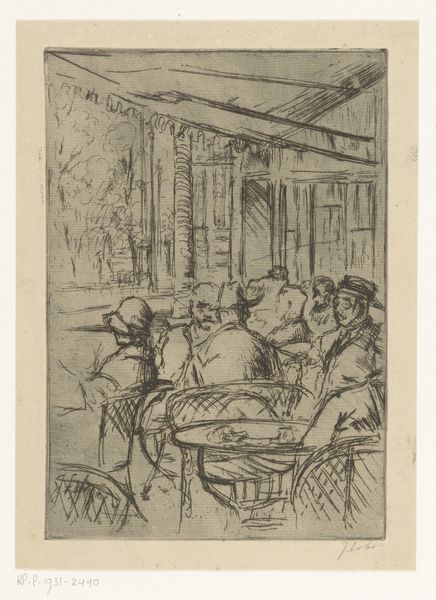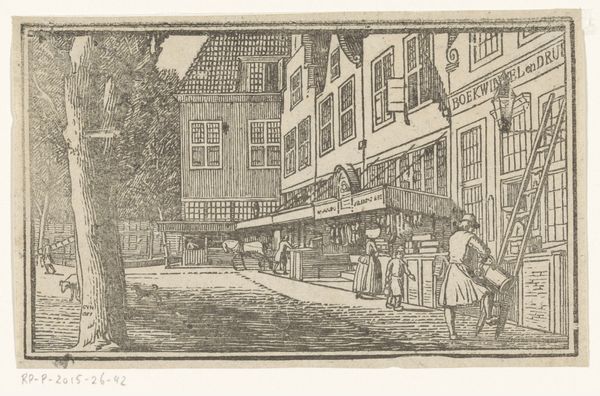
Copyright: Public Domain
Curator: Here we have Engelbert Gminska's "Café in Marseille," a drawing from 1912, rendered in ink on paper using a frottage technique. It's currently held in the Städel Museum. Editor: The first thing that strikes me is its immediate, sketch-like quality. The stark black ink creates sharp contrasts, a sense of energy but also of perhaps, incomplete narratives. Curator: I think the incompleteness is crucial to its interpretation. Cafés were not just places for refreshment, but nodes of communication. Think about how spaces shape social identities, acting almost like theaters for daily life in 1912 Marseille. What narratives were brewing there, politically or artistically? Editor: It's interesting that you frame it as theater. I see a deliberate interplay between structure and fluidity. The solid forms of the buildings and bar are juxtaposed against the more gestural depictions of people. There's a rhythmic use of hatching and cross-hatching, especially noticeable in the shadows cast by the awnings. Curator: Indeed, shadows carry immense psychological weight in the city, acting as metaphorical screens for clandestine operations, and hidden corners that serve both escape and reflection. Those obscured, seated figures near the bar entrance may reference deeper implications within urban spaces, almost cinematic anticipation... Editor: Yes! And beyond symbolism, notice the line quality—deliberately varied in thickness and pressure to direct the viewer’s gaze. From broad strokes defining the figures to finer details like the bar sign. It's technically assured in a way that heightens the atmosphere. Curator: By giving this artwork its full consideration, we appreciate how this ordinary location became so charged during that historical era, functioning not only for momentary escapism from routine for the lower and middle class but also as places to develop their identities through discussion about topics such as the labor and living conditions in a global port like Marseille, filled with European colonialists, local proletariat, and immigrants. Editor: And looking closely, we can admire the successful use of technique and composition as an entry into the emotional life of Marseille during a vibrant and important time.
Comments
No comments
Be the first to comment and join the conversation on the ultimate creative platform.
